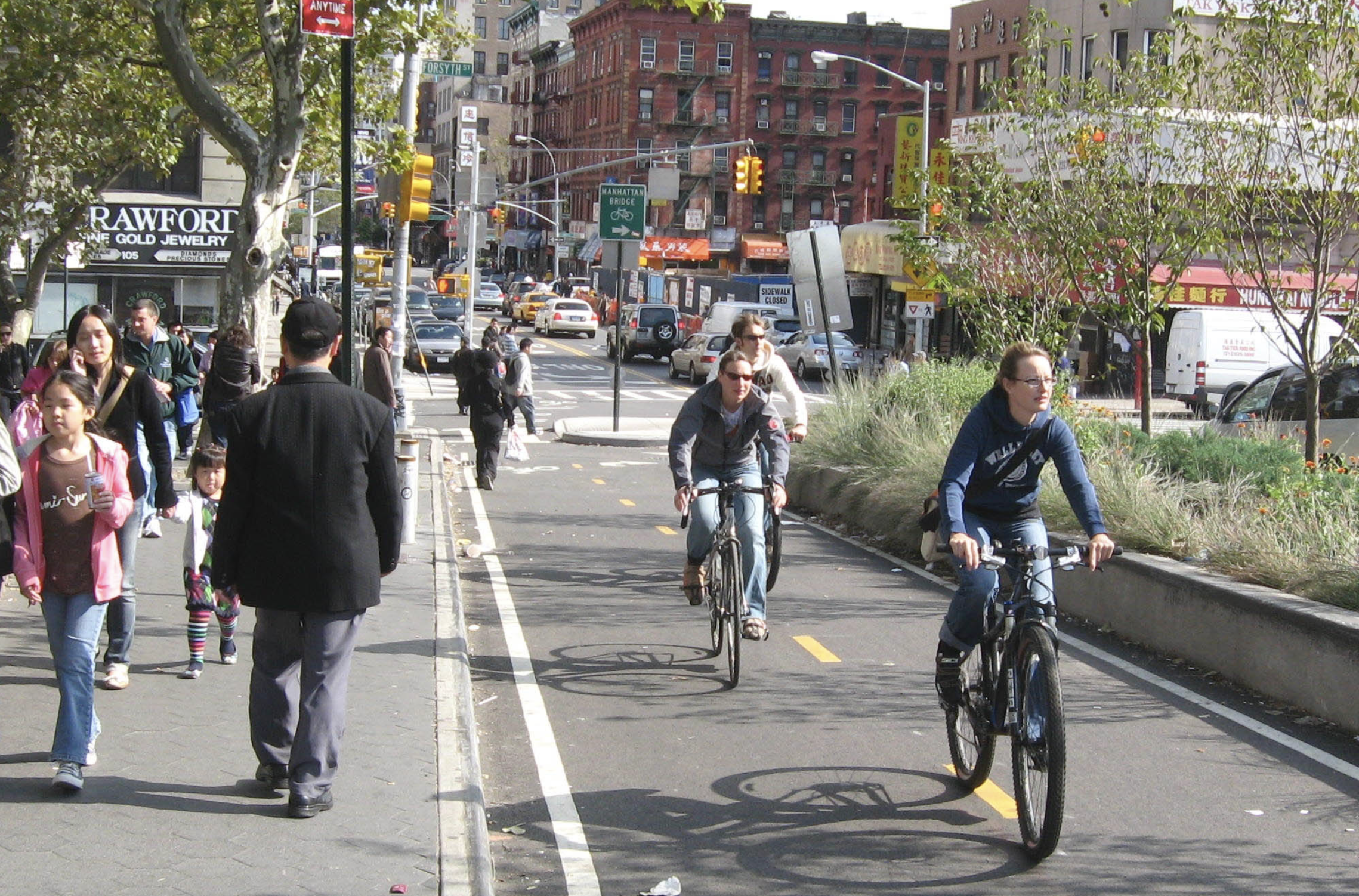The busways started by Mayor Bill de Blasio in 2020 and 2021 sped up service for transit riders, according to official MTA bus speed data.
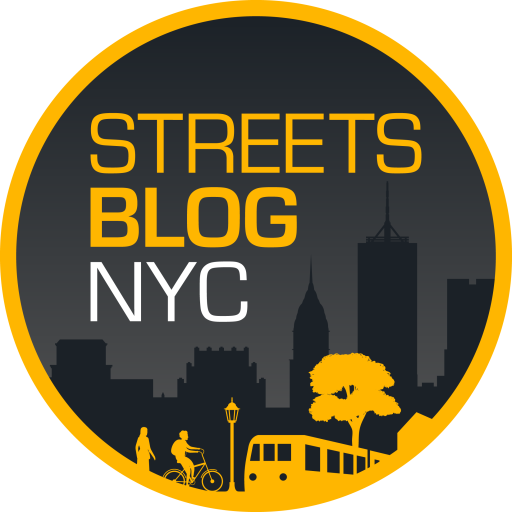
nyc.streetsblog.org
Eyes on the Street: How Are De Blasio’s Pandemic Era Busways Doing?
Four busways started by the former mayor and made permanent by Mayor Adams have sped up service for transit riders. But how much depends on car drivers.
12:00 AM EST on November 17, 2023
NYC DOT|
Buses are moving faster on Bill de Blasio’s busways.
By
Streetsblog
Finally, something good from the Covid-19 pandemic!
Four busways announced and implemented in 2020 and 2021 during the latter days of the de Blasio administration appear to have sped up service for transit riders, according to official MTA bus speed data.
All four
de Blasio-era projects — Jay Street, West 181st Street, Flushing Main Street and Archer and Jamaica avenues in Jamaica — were made permanent by his successor Mayor Adams, albeit with
fewer hours of enforcement in three out of four cases. Adams's DOT has since launched a new busway on
Livingston Street in Brooklyn, but canceled plans for one on Fordham Road in the Bronx. A long-promised bus improvement project on Flatbush Avenue appears to be stalled.
Bus speeds have improved along all four routes, though the magnitude of the improvement varies by time and location. The biggest overall increases were on 181st Street, where buses now run 30 percent faster during all peak periods eastbound and 39 percent faster westbound.
Buses are moving faster thanks to the city's busways.Data provided by MTA
All of the busways are enforced by fixed-location cameras, according to city officials. Some buses also have enforcement cameras mounted to their windshields. In anticipation of our annual "Bus Week" feature, Streetsblog reporters fanned out across the city to bring you this special, "Eyes on the Busways" feature:
Jamaica and Archer avenues in Queens
This busway comprises two routes through downtown Jamaica: one on Archer Avenue and another on Jamaica Avenue.
The good news: Buses on Archer Avenue are making their voyage 39 percent faster. The bad news? The results on Jamaica Avenue are too small for riders who spoke to Streetsblog to even notice.
Evening rush hour speeds increased just 8 percent in the eastbound direction. Average morning and evening peak speeds rose just 12 percent eastbound on Jamaica Avenue and 14 percent on Jamaica Avenue westbound. Those percentage amount an overall speed increase of just 0.4 to 0.5 miles per hour.
Speeds on the four busways in 2019 vs. today.Data via MTA
The strip remains littered with illegally parked cars blocking the way of buses, so riders weren't very impressed.
"I have yet to see any improvement, in fact, it has fallen back in some ways," said rider Kent Gendron.
Confusingly, the city and MTA
have given out thousands of bus lane tickets on Jamaica and Archer avenues. In fact, bus-mounted enforcement cameras on the Q44 on Jamaica Avenue dolled out nearly 500 tickets per month to drivers between Oct. 2022 and this past September — more than on any of the other 2021-era busways, the MTA said.
Illegal parking in the bus-only lanes on Jamaica Avenue.Photo: Julianne Cuba
Asked about the number of violations issued by fixed-location cameras, the city Department of Transportation provided a total number of violations issued on all four busways for the month of September — 13,217. The agency did not provide a breakdown by route, making it impossible for Streetsblog the gauge their effectiveness. It's likely many violators are breaking the law to get out of tickets one way or another, either through plate covers or illegal registrations.
Whatever the form, more enforcement is needed, said Orlando Tejeda, a bus operator for 12 years. NYPD simply isn't giving out enough tickets to keep downtown Jamaica's bus lanes clear of illegal parking, Tejeda said.
"The busway? That does nothing, it’s absolutely nothing, they don’t give tickets," he bemoaned.
"People just lift their trunk so they can't take a picture. ... I’m a driver myself, they need to enforce."
Jay Street in Brooklyn
Jay Street also experienced only limited improvement in bus speeds — up 20 percent during peak hours.
Like the Jamaica route, Streetsblog reporters observed significant illegal parking in the Jay Street busway, which also runs through an area densely populated by courthouses and other government buildings, where placard abuse is rife.
Street rules
prohibit parking on much of Jay Street — but government workers with placards still do it. Their presence on the ostensibly car-free thoroughfare, shown below, means slower service for bus riders.
Jay Street is hardly car-free despite the legal prohibition on most private vehicle access.Photo: David Meyer
The Jay Street busway runs between Livingston and Tillary streets — and the rules only allow private car drivers to make local deliveries or drop-offs and then make the next available turn. Yet Streetsblog observed several private vehicles flouting the busway rules on Jay and its counterpart busway on Fulton.
"Some of these cars are not even moving. They're double-parked. It makes it hard for us," 18-year MTA bus operator Anita Mealy told Streetsblog during a recent early morning layover on the street. "People have gotten really bold with not caring about blocking the buses."
Mealy acknowledged improved bus speeds since the city banned most cars and trucks from Jay Street two years ago.
"It used to be much worse. I mean, we couldn't get on here. This was their own personal parking lot," Mealy said, pointing to the bus layover area outside NYU-Langone next to the Myrtle Promenade.
Streetsblog observed a handful of cars drivers passing through Jay Street without making a local stop on a recent weekday morning, in violation of the rules.
The MTA said it gave out just 28 tickets from bus-mounted enforcement cameras on Jay — fewer than on any of the other 2021-era busways. The cameras are only mounted on buses from the B63 route, according to city DOT.
Main Street in Flushing
Buses load passengers on the busy Main Street busway. Photo: Kevin Duggan
The Downtown Flushing busway runs on Main Street between Northern Boulevard and Sanford Avenue, with an offshoot for the northernmost block of Kissena Boulevard.
Only buses, trucks, and emergency vehicles are allowed to make through trips northbound, while every other vehicle is allowed local access, but must make the first available turn off the busway.
The busway went into effect in
January 2021 as a 24/7 busway pilot, after delays due to opposition by local businesses and then-Council Member Peter Koo, who notoriously chanted
“business lives matter” claiming the restrictions would harm shops, and an unsuccessful lawsuit to stop it. Mayor Adams made it permanent in July 2022, but
scaled back the hours to 6 a.m. to 7 p.m.
Buses previously used to be slower than walking speed, according to DOT. MTA bus speed data show decent increases across the board on Main Street, with the least improvement — 18 percent — during the morning rush.
The sidewalks along Main Street are packed with people, especially in the blocks close to the 7 train, and people sometimes spill out into the road. Businesses seem to be doing great along the corridor, despite the earlier fears that the car restrictions would hurt their revenue.
Congestion on the Main Street busway is pretty bad north of 37th Avenue, where drivers have to turn off. Here, a bus takes the oncoming lane to circumvent the bottleneck. Photo: Kevin Duggan
MTA bus-mounted cameras gave out just 342 bus-related violations to drivers between Oct. 2022 and this September. Unsurprisingly, Streetsblog saw a handful of drivers flouting the transit-first rules on a recent mid-day visit.
"Traffic is a lot better," said one MTA driver. “We get through, whereas before it was worse. To get through was really a headache.”
Another driver, James Smith, said the busway helps "when they chase people from where they're not supposed to be."
Riders who spoke to Streetsblog agreed that the red paint and related prohibitions on car access helped improve service.
“It’s much better than before, a few years ago. Before you had to wait so long," said Sophia Chen, a teacher's assistant who lives in the neighborhood.
181st Street in Manhattan
The top performer among the 2021 busways is on Manhattan's
West 181st Street between Broadway and Amsterdam Avenue.
Eastbound rush hour bus speeds increased 30 percen, while westbound rush-hour speeds jumped 39 percent, according to MTA figures.
Streetsblog found the strip to be extremely subdued during a recent afternoon visit. The vast majority of drivers coming north or south on Broadway didn't turn onto 181st Street, and people headed east on 181st Street at Broadway didn't drive straight through to stay on 181st. Instead, they turned off the street at their first opportunity, as the law requires.
The western entrance to the West 181st Street busway in Upper Manhattan.Photo: Dave Colon
While letting drivers access 181st Street one block at a time results in some instances of cars either stopped at lights right in front of bus stops — or parked too close to a bus stop for the bus to pull over to the curb — there wasn't the kind of traffic that made a mess of the street
in the past.
All quiet on the West 181st Street busway.Photo: Dave Colon
"It's convenient they have the bus lanes now, you're not stuck in traffic," said Jose, who takes the Bx11 and Bx35.
"But we need them more frequently, sometimes you might miss a bus and you might be standing out here for over half an hour waiting for the next bus."
Reporting by Julianne Cuba, David Meyer, Kevin Duggan and Dave Colon
nypost.com





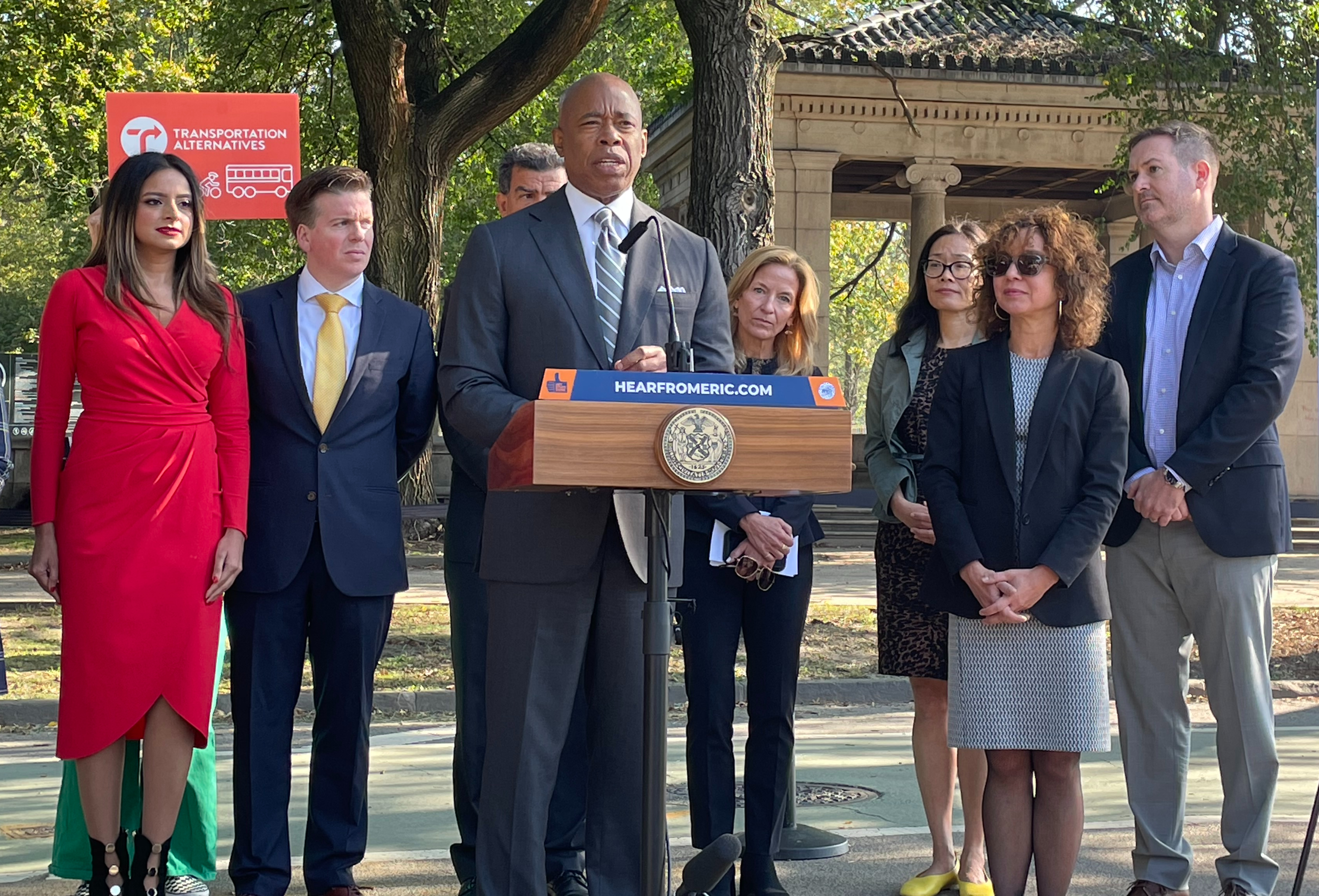


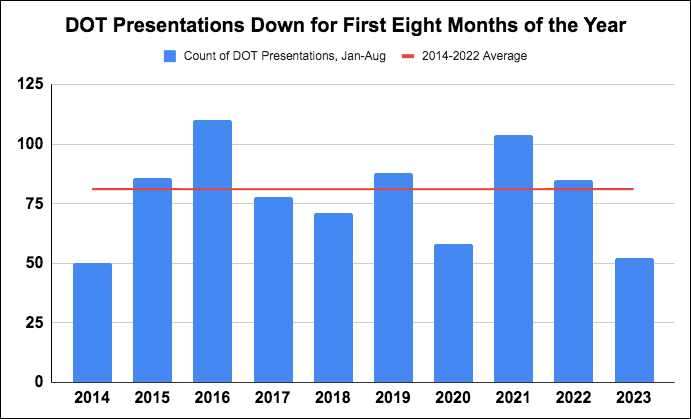





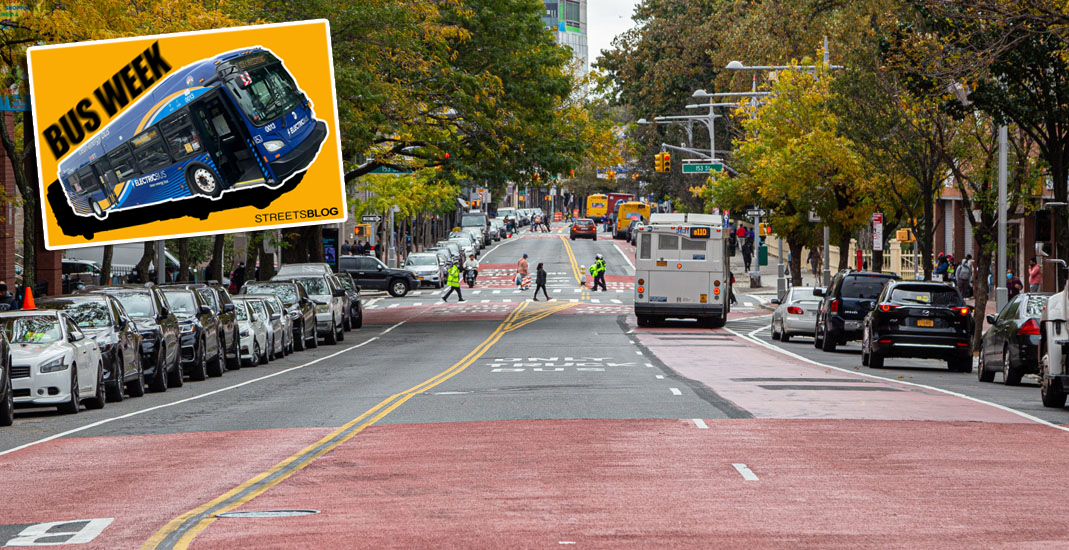
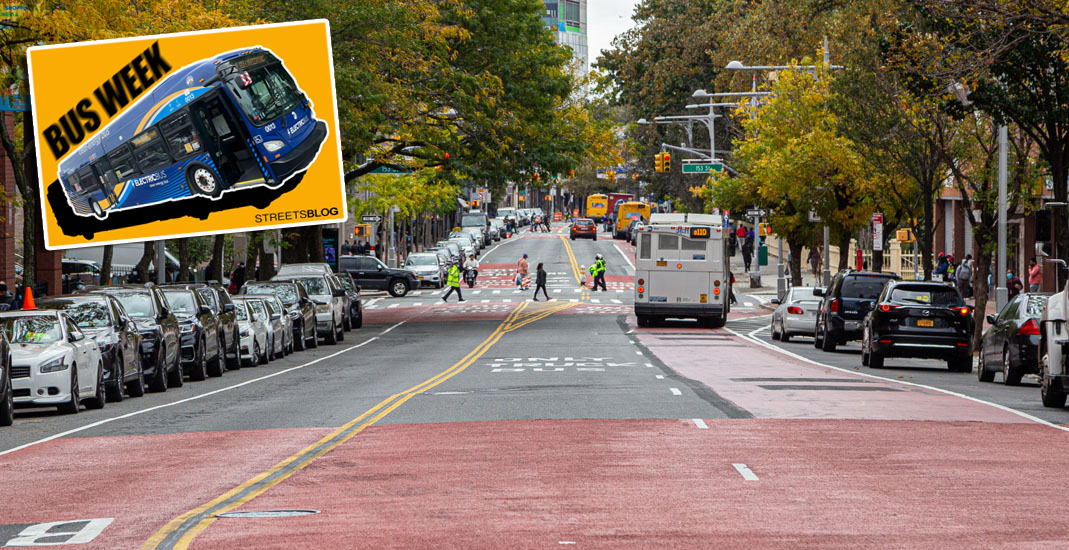
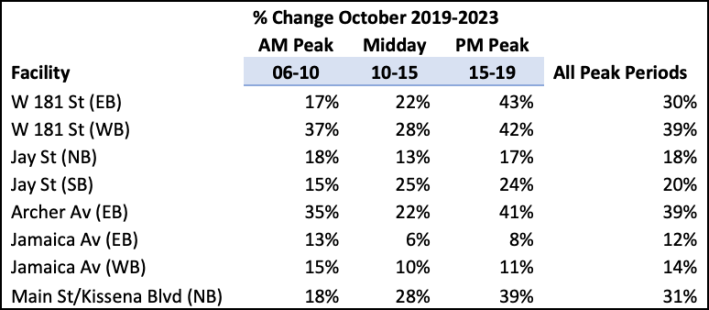

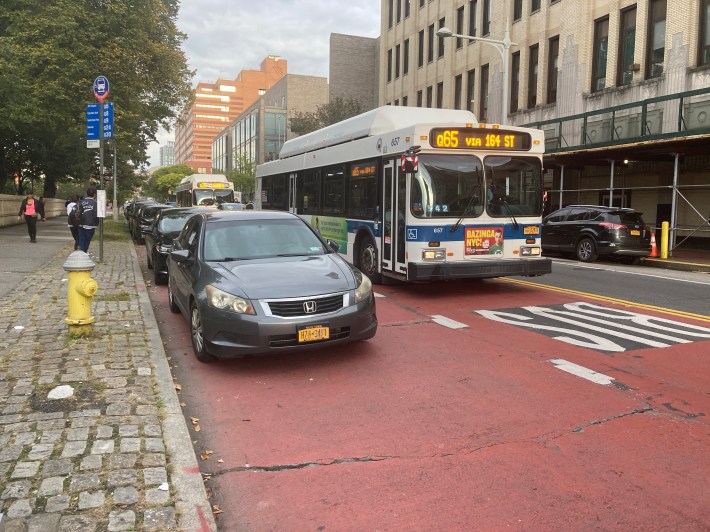
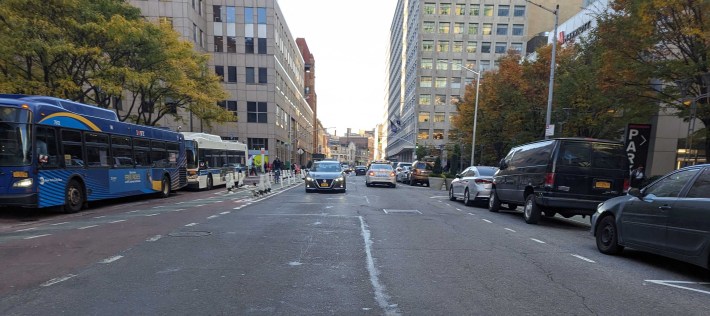
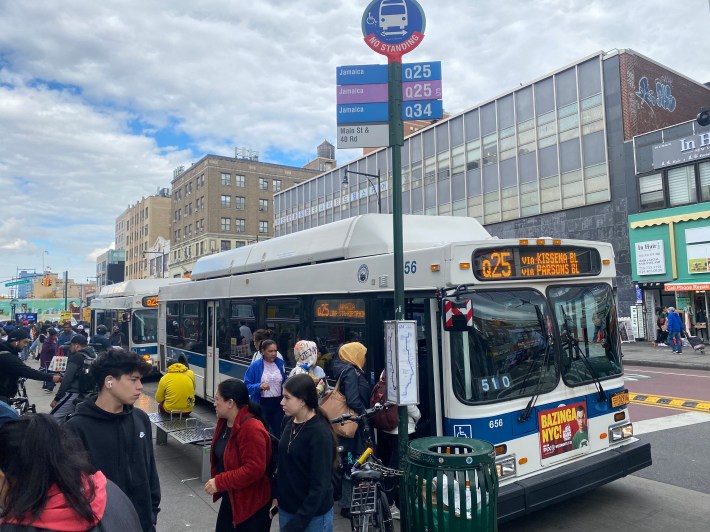
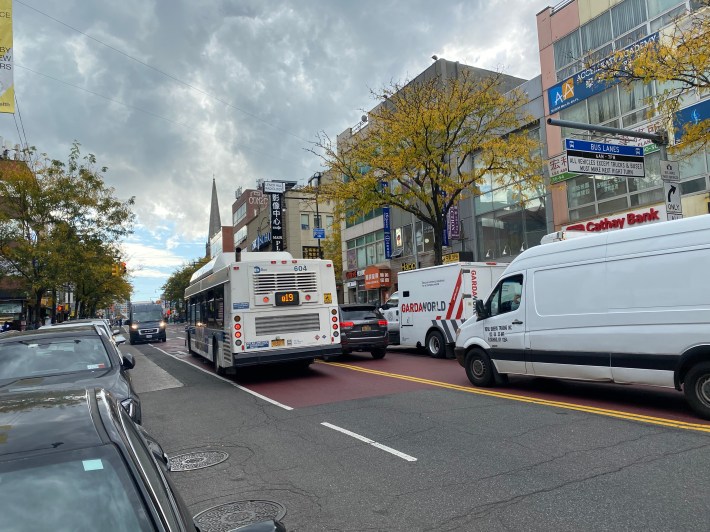
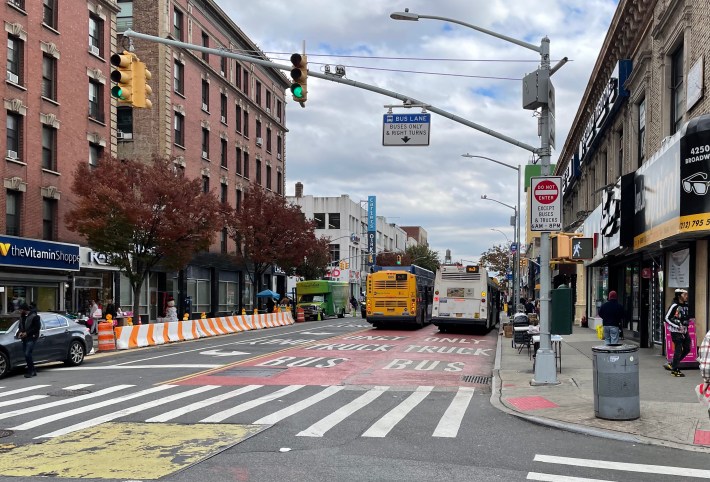
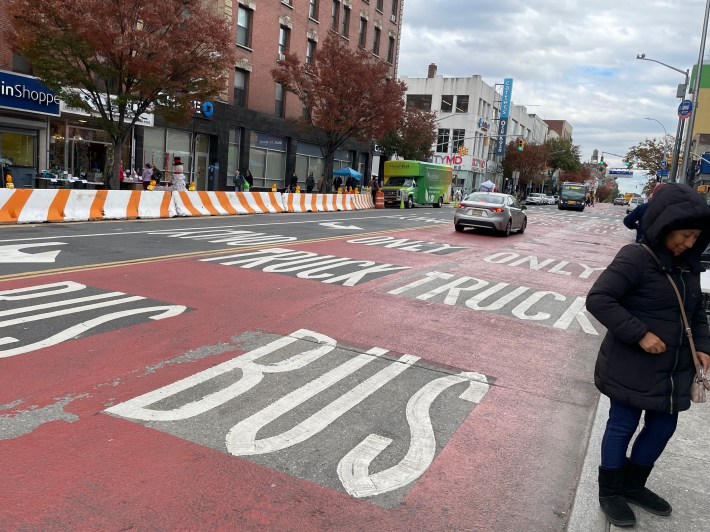
 bikes do not belong in that fukking tunnel...
bikes do not belong in that fukking tunnel...